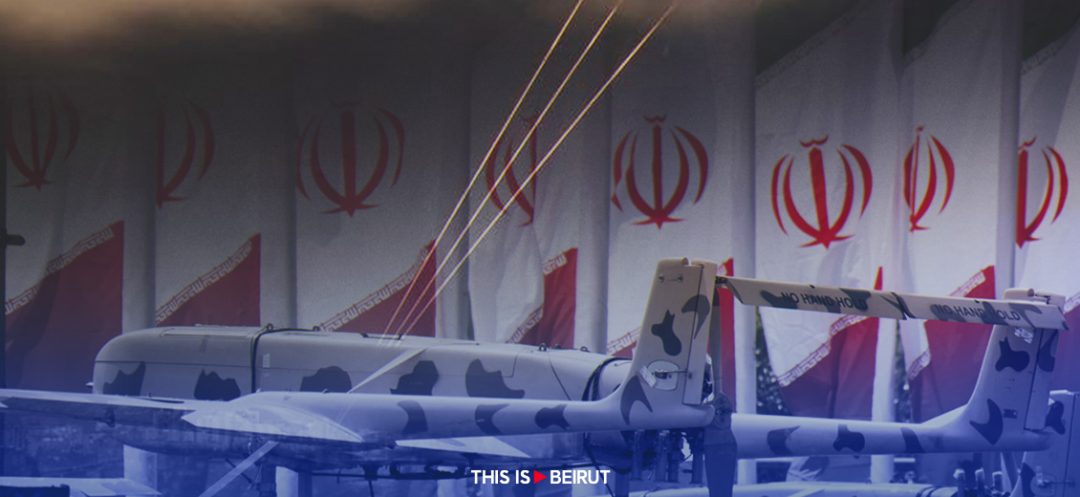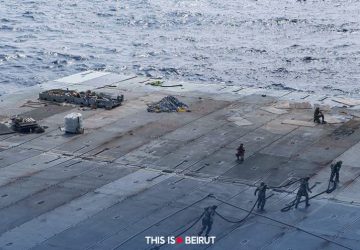Listen to the article
On Saturday, April 13, just before midnight, Iran launched more than 300 drones and missiles towards Israel in a first-of-its-kind direct attack. The reasons and consequences of this attack have been extensively analyzed in newsrooms, on television sets, and in diplomatic and decision-making centers around the world.
The barrage included 170 drones, over 30 cruise missiles and 120 ballistic missiles, which were launched from Iran as well as from Iraq and Yemen. These projectiles followed different trajectories, and some of them were spotted over Lebanese territory, where they were intercepted.
Intercepted, but by whom?
According to retired General and Director-General of the Regional Forum for Consultation and Studies Khaled Hamadeh, there is no information on the number of missiles that flew over Lebanese territory. “What we know is that the missiles spotted over Lebanon were launched from Iraq, specifically from the Abu Kamal region, bordering Syria,” General Hamadeh explains.
These missiles were spotted around 2 AM on the night from Saturday to Sunday, over several regions of Lebanon from north to south. Some Lebanese also witnessed the impressive sight of their destruction. According to General Hamadeh, the interception took place from the sea and was carried out by the US fleet and allied forces in the Mediterranean. “All air and naval forces deployed in the Mediterranean intervened, including the United States, the United Kingdom and France,” he continued.
Contacted by This Is Beirut, Riad Kahwaji, Dubai-based Middle East security and defense analyst, and director of the Institute for Near East and Gulf Military Analysis (INEGMA), specifies that the missiles flying over Lebanon were shot down by Israeli, American and British fighter jets using heat-guided air-to-air missiles. “It is not possible to know the number of missiles that flew over Lebanon,” he adds.
Where are the fighter jets based?
According to the British press, the Typhoon jets of the Royal Air Force (RAF) neutralized a number of drones en route to Israel. The United Kingdom has a military base, named Akrotiri, in Cyprus, which is used as an advanced deployment base for British military operations in the Middle East.
British Prime Minister Rishi Sunak had announced on Sunday that the Royal Air Force had dispatched fighter jets and refueling aircraft to the region to reinforce Operation Shader, the British operation against Daesh in Iraq and Syria.
When contacted by This Is Beirut, the press office of the British Ministry of Defense specified that it had “not yet provided details” about the drones, adding that RAF aircraft were operating as part of the Daesh combat mission in Iraq and Syria, which takes place in the airspace of these two countries. The press office also did not want to specify whether RAF aircraft had participated in intercepting drones over Lebanon.
According to Riad Kahwaji, American and British fighter jets took off from Qatar and Cyprus respectively, and were positioned above Syria when they intercepted the missiles. It is worth noting that Qatar is home to Al-Udeid, the largest American base in the Middle East.
Furthermore, US President Joe Biden had stated on Saturday that the US military had deployed planes and destroyers to the region during the week preceding the Iranian attack. “Thanks to these deployments and the extraordinary skills of our military, we helped Israel shoot down nearly all of the drones and missiles,” according to a White House statement.
France, for its part, carried out “interceptions” of Iranian missiles and drones targeting Israel on the night from Saturday to Sunday at the request of Jordan, French President Emmanuel Macron confirmed during a televised interview on Monday. “We took off our planes and intercepted what we had to intercept,” he said.
Since 2014, French fighter jets have been deployed in Jordan as part of the international coalition against Daesh. The projected air base (BAP) in the Levant is located within the Jordanian Prince Hassan base, also called H5, northeast of Amman (France also has a base in the United Arab Emirates).
French Foreign Minister Stéphane Séjourné had stated in a television news program, “We have taken our responsibilities because we are actors in regional security. The Iranian attack also threatened the security of our forces,” adding that France had “participated in interception actions.” However, no details were given on whether France was involved in intercepting drones over Lebanon.
It is worth noting that according to General Hamadeh, Lebanon was never in danger because drones and missiles are guided military projectiles.
However, Tuesday afternoon, residents of al-Bennay in the mountain region of Aley heard a loud explosion. It was that of an Iranian drone that had fallen in a wooded area. The Lebanese army had established a security cordon in the area and detonated the drone on the spot.





